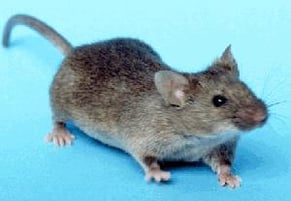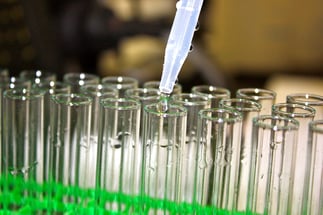UC Berkeley neuroscientists are creating technology that can fool the brain into thinking it has felt, seen or sensed something that it has not. The goal is to read neural activity and learn which sets of neurons to activate in order to simulate the pattern of an actual brain response. This technique might someday be used to replace lost sensations after peripheral nerve damage or control a prosthetic limb.
Read MoreTags: University of California Berkeley, University of California, BioResearch Product Faire Event, Research Funding, NIH funding, UCBerk, 2018, Neurological Research

Researchers from the University of California, Berkeley are one of many groups benefiting from funding from the BRAIN Initiative, founded by President Obama in 2013. The Berkeley research team, in partnership with a team from the Allen Institute for Brain Science in Seattle, have received $65.5 million from the National Institutes of Health (NIH) to catalog all the cells of a mouse brain with the goal of using this catalog to later classify all cells in the human brain. (Image courtesy of Wikimedia Commons)
Read MoreTags: University of California Berkeley, University of California, BioResearch Product Faire Event, NIH funding, UCBerk, 2018, BRAIN Initiative
The Human Computation Institute, in collaboration with UC Berkeley and other institutions, has developed a new game called Stall Catchers that will allow the public to directly contribute to research for a cure to Alzheimer's disease. In the online game, participants will view movies of real blood vessels in mouse brains and search for any clogged capillaries, or stalls. Capillary stalls, where blood is no longer flowing, are thought to be a key cause of Alzheimer's disease.
Read More
Tags: CA, University of California Berkeley, California, University of California, Alzheimer's Research, Southwest Region, UC Berkeley, Northern California BioResearch, Alzheimer's Disease

The University of California, Berkeley is a leading research institution, producing promising research in all divsions of the life sciences. To help further research in immunotherapy and cancer, researchers from the University of California, Berkeley have recently teamed up with the Berkeley-based biotech company, Aduro Biotech Inc., for a $7.5 million immunotherapy initiative. This Immunotherapeutics and Vaccine Research Initiative (IVRI) will provide three years of funding to infectious disease researchers studying new techniques for combating both infections and cancer.
Read MoreTags: CA, University of California Berkeley, immunotherapy, cancer research, vaccine research, Southwest, researchers, UC Berkeley, new funding, UCBerk, 2016, BioResearch Product Faire, Aduro Biotech
 Going “green” in chemistry has become a lot more lucrative than was anticipated just 18 short months ago. In June of 2013, Biotechnology Calendar Inc. reported that the green chemistry market was expected to grow from $2.8 billion in 2011 to $98.5B by 2020 and will save the industry $65.5B. However, recent reports indicate that we may actually see growth in the bio-based chemicals market from $78B in 2012 to $198B by 2017, eventually accounting for 50% of the chemicals market by 2050.
Going “green” in chemistry has become a lot more lucrative than was anticipated just 18 short months ago. In June of 2013, Biotechnology Calendar Inc. reported that the green chemistry market was expected to grow from $2.8 billion in 2011 to $98.5B by 2020 and will save the industry $65.5B. However, recent reports indicate that we may actually see growth in the bio-based chemicals market from $78B in 2012 to $198B by 2017, eventually accounting for 50% of the chemicals market by 2050.
Read More
Tags: CA, University of California Berkeley, chemical research, California, 2015, Berkeley, BioResearch Product Faire Event, Research Funding, green life science research
The $500,000 Keck Fund research award was given earlier this year to bioengineering professors Kumar and Murthy for their project, Single Tumor Cell Proteomics for Diagnosis and Prognosis.
Tags: 2014, University of California Berkeley, proteomics, cancer research, BioResearch Product Faire Event, UC Berkeley, UCBerk
Researchers at UC Berkeley recently developed a novel imaging technique that allowed them to observe cellular processes in Cyanobacteria, one of the most common forms of bacteria. This research was a collaborative project involving researchers from UC Berkeley and the Department of Energy Joint Genome Institute (DOE JGI).
Tags: 2014, University of California Berkeley, Southwest, California, Cell Imaging, Berkeley, BioResearch Product Faire Event, UC Berkeley, UCBerk
 Synthetic biology is the application of engineering principles to altering components of biological systems, like genes and cells, towards creating new and revised living things (watch the video below for an introduction). It's arguably the most radical, cutting-edge laboratory science field today, and one that calls on its scientists to grapple with ethics as well as biotechnology. At the forefront of this life science revolution is the University of California Berkeley-led consortium SynBERC: the Synthetic Biology Engineering Research Center, with partner colleagues at UCSF, Stanford, MIT, and Harvard. Just this week, principal synbio investigators from these institutions came together with industry scientists and ethicists for a symposium on the UCB campus titled Programming Life: the revolutionary potential of synthetic biology, co-sponsored by SynBERC and Discover Magazine. Whether we are going to continue down the road of reengineering life was not the question so much as how we will go about that delicate task and what the implications and promises are of such a bold project.
Synthetic biology is the application of engineering principles to altering components of biological systems, like genes and cells, towards creating new and revised living things (watch the video below for an introduction). It's arguably the most radical, cutting-edge laboratory science field today, and one that calls on its scientists to grapple with ethics as well as biotechnology. At the forefront of this life science revolution is the University of California Berkeley-led consortium SynBERC: the Synthetic Biology Engineering Research Center, with partner colleagues at UCSF, Stanford, MIT, and Harvard. Just this week, principal synbio investigators from these institutions came together with industry scientists and ethicists for a symposium on the UCB campus titled Programming Life: the revolutionary potential of synthetic biology, co-sponsored by SynBERC and Discover Magazine. Whether we are going to continue down the road of reengineering life was not the question so much as how we will go about that delicate task and what the implications and promises are of such a bold project.
Tags: 2014, CA, 2013, University of California Berkeley, biofuels, synthetic biology, Southwest, California, University of California, genetic engineering, Berkeley, BioResearch Product Faire Event, Research, Berkeley Labs, UCBerk, UC Berkley
The Brain Activity Map project could be the next big federal life science research endeavor, with no less a goal than the mapping of the entire living brain and all its neuronal activity. Like the Human Genome Project of the 90's, the not insignificant financial outlay is being presented as an investment that will net even bigger returns, both in terms of new technology and a vastly increased understanding of the mind. President Obama is expected to include the multi-billion dollar, decade-long funding in his upcoming budget proposal, and neuroscience research was a topic he addressed specifically in his recent State of the Union address.
Tags: 2014, CA, University of California San Diego, 2013, Northeast, University of California Berkeley, New York, Columbia University, Southwest, California, University of California, Berkeley, Neuroscience, San Diego, SDVS, Columbia, BioResearch Product Faire Event, Funding, UCSD, NY, NIH, Columbia University Medical Center, Biotechnology Vendor Showcase, Berkeley Labs, UCBerk
2012 was a big year for the science of snipping DNA to introduce genetic changes into a cell, also known as genome editing. Though Science magazine hailed two new techniques for selectively cutting and pasting DNA in the field of genome engineering as together constituting one of the Top 10 scientific breakthroughs of the year, those methods may already have been surpassed by researchers at the University of California Berkeley using RNA and a single protein. Faster, simpler, and cheaper, the UCB team led by Dr. Jennifer Doudna published initial results of their work genetically modifying bacteria using the RNA-based DNA cleavage technique last summer. The response from the the life science community was extremely positive, with reviews calling it a "tour de force" and a "a real hit," according to the latest press release. Now three more papers are coming out based on the work of the Doudna Lab showing that the RNA programming technique using a bacterial enzyme known as Cas9 is equally effective in making alterations to human genes.
Tags: 2014, CA, 2013, University of California Berkeley, AIDS Research, Molecular Engineering, gene therapy, Southwest, California, University of California, genetic engineering, Berkeley, BioResearch Product Faire Event, Harvard, genomics research, UC Berkeley, UCBerk

